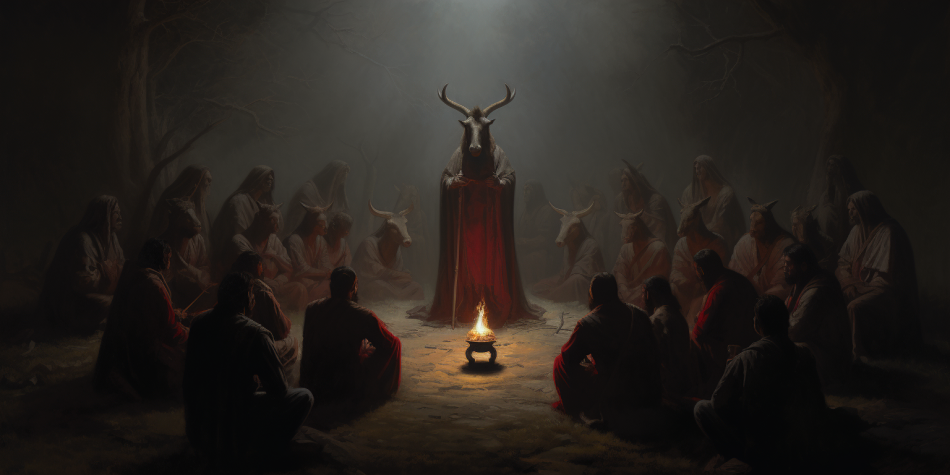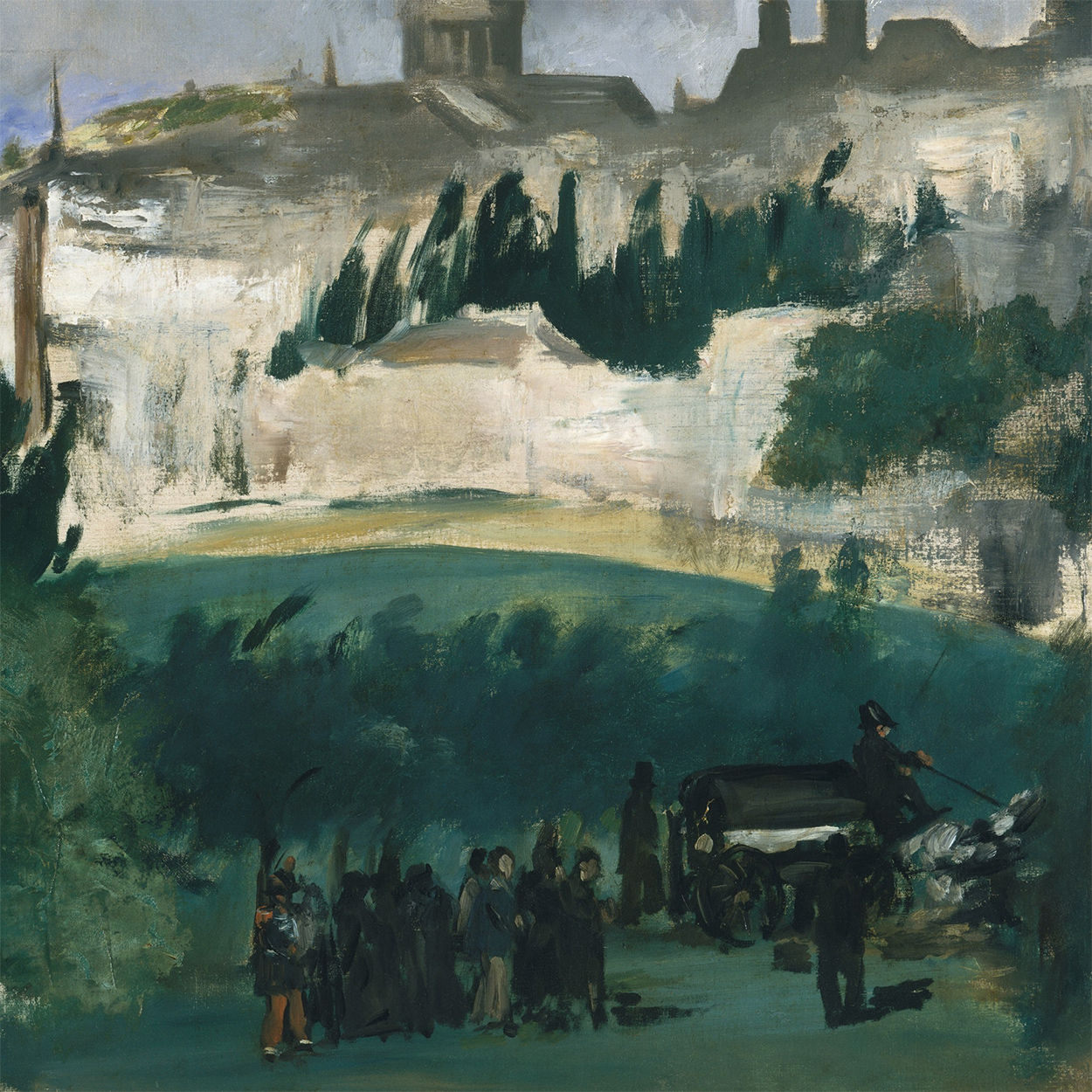Latter-day Saints have in the Book of Mormon an interesting description of a sociological phenomenon: the two civilizations described in that text come to their demise in a similar way—by first fragmenting and then coalescing into exactly two rival movements that are consumed with determination to destroy each other. That process of coalescing happens among people with different loyalties and allegiances: family, tribe, clan, heritage, and more. Arriving at exactly two rival movements involves the dissolution of all of those other loyalties and allegiances in favor of exactly one or the other team loyalty.
Latter-day Saint observers of recent political trends in the United States, in particular, can see these alarming processes underway. The ideological left and right in the United States have been rapidly hardening into cult-like movements, described well in Terryl and Nathaniel Givens’ evergreen article This is How It Begins to End.
The word “cult” has fallen into academic disfavor in recent years because, like many terms, it has been applied to an ever-increasing set of groups and behaviors in a process called semantic inflation. This is when a term becomes so overused that people can no longer reliably agree on what the term actually means. Attempts have been made to create a more rigorous framework for defining the term cult, most notably Steven Hassan’s BITE model, with its focus on control over people’s behavior, information, thoughts, and emotions. But as I demonstrated in my recent presentation on the use of the term “cult” in reference to Latter-day Saints, the BITE model can be used convincingly to apply the cult label to military service, academia, activism, start-up companies, and a number of other human experiences. For this reason, the BITE model is often dismissed as unhelpful. Every human being is born into a high-demand belief system.
As I argued in my presentation, movements that are experienced as “culty” by one person may be experienced the opposite way by another. Critics of The Church of Jesus Christ of Latter-day Saints sometimes characterize our faith as a “high-demand belief system,” which is true. But it is also true that every human being is born into a high-demand belief system. And critics of religion have a hard time admitting this, but on a societal level, there is no higher-demand belief system than nihilism, the belief that life has no inherent meaning or purpose. Its miserable premise has birthed a variety of high-demand coping strategies, chief among them hedonism and activism. In my personal experience growing up as a Latter-day Saint youth in hedonistic Southern California, I witnessed peers turning constantly to hedonistic numbing behaviors of drugs and sexual promiscuity, with punitive exclusionary and shunning behaviors toward people who questioned the dominant hedonistic social narrative.
The soundtrack for my teenage years was a Rush song called Subdivisions, with lyrics that spoke to the frustrations of living as a religious minority in my area:
In the high school halls,
In the shopping malls,
Conform or be cast out!
It might be surprising for some observers of our faith to learn that for many of us who grew up in hedonistic secular contexts, the intensive and highly controlled experience of missionary service actually felt in many ways like a relief. And people who find the idea of a university behavioral code “oppressive” might be further surprised to know that many students enroll at Brigham Young University specifically for the benefits of living with the school’s honor code. For myself and many of my peers there, BYU felt like freedom from the pressure cooker of hedonistic nihilism that surrounded us in our younger years.
My experience of faith has definitely been high-demand, and also extremely high-reward. But it has not been as high demand as many alternatives I have seen. Over the past century, religious groups that have relaxed their demands in doctrine and praxis have mostly declined and disappeared. Headlines about the rise of the “unchurched” have emerged at the same time as headlines of nihilistic despair among young people, alongside headlines of skyrocketing rates of mental illness and deaths of despair. In reality, these are all the same story, the story of the extremely high-demand belief system called nihilism.
The most effective antidote to nihilism in Western civilization has been the scriptural witness of a loving God revealed by prophets. Through the ages, prophets have been followed: sometimes in the form of simple adherence to their guidance, but other times in people’s willingness to literally pack up and move to walk behind Moses or join the entourage of Isaiah or John the Baptist.
The phrase “Follow the prophet,” sung by our primary children, is sometimes regarded as “culty” by people who have never seriously investigated its meaning. When we encourage each other to follow the prophet, we are talking about our scriptural exhortation to “give heed” to a group of people who we believe to hold a prophetic office described in the words of Jesus as “Moses’ seat.” To “give heed” means to treat their guidance as having divine inspiration or authority, and it is a significant component of what we call a commitment to sustain our church leadership.
The commitment to sustain poses challenges to believers in situations where prophetic guidance goes against our own instincts or perceptions. The tension between internal versus external authority is a constant in our life of faith, as it has always been for believers. An excess of deference to external authority becomes idolatry, or what we call “borrowed light,” and at the other end of the spectrum, sole reliance on our internal authority is self-worship. I suggest there is a healthy “integrated” center place; in my own view, it means that upon receiving prophetic guidance, I make the best possible case for the validity of that guidance before I entertain a stance of disagreement. That can sometimes be a long and prayerful process of study and consultation; it requires zero surrender of my own autonomy or my critical thinking skills. By contrast, I observe that critics of prophets through the ages have tended to operate like “herds of individuals,” refusing to examine their own worldviews and behaving in very predictable ways, almost as if following a script.

Of course, it is important to here acknowledge the merit in some criticisms. In many contexts, the commitment to follow a religious leader can indeed be a part of an unhealthy approach to religion that is rightly described as “culty.” But it is abundantly clear that this is not the only way to experience this principle. In contrast with cult groups, which tend toward insularity and isolation, prophet-following Latter-day Saints live all over the world and study and work with constant exposure to different ideas. Non-Latter-day Saint sources of information are frequently quoted and promoted in official messaging at the highest levels of church leadership. People who sometimes think of the Church in “culty” terms are faced with cognitive dissonance over the reality that mentally healthy, well-adjusted adult Latter-day Saints who live with a bedrock spiritual commitment to follow the prophet are found not in a walled compound somewhere but fully participating at all levels of secular society in most institutions. The most effective antidote to nihilism is the scriptural witness of a loving God.
In a recent presentation at BYU-Idaho, Latter-day Saint scholar Melissa Inouye offered a warning voice about political trends, using Chinese political history as an example. An interesting element of her presentation was her description of China’s cultural revolution, with its violent mobs and the cult of personality surrounding Chairman Mao. Her warnings seemed to have general applicability, speaking to tendencies that can be observed at both the political extremes in the United States. Here and in some other areas, the ideological left and right have morphed into cult-like movements, and I apply that term in light of their attempts to control information; their obsession with ingroup and outgroup; their insistence upon absolute ideological conformity, and more of their manifestations of components of the BITE framework. Our political movements often behave like two conspiracy cults that derive oppositional life force from one another. And strangely enough, whatever their differences, their extreme elements seem to be able to unite around a hatred of Jews.
In a recent article in The Free Press, Jewish filmmaker Ilan Benjamin describes a sort of awakening he experienced following the October 2023 Hamas terror attacks in Israel. Ilan describes his past thinking as a progressive Jew in the United States:
I proudly supported Black Lives Matter, LGBTQIA+, and feminist causes. I called myself a progressive Jew. But over the years, I noticed a disturbing trend: With all the atrocities in the world, why did my social justice warrior friends hate Israel so disproportionately? Why did it feel like intersectionality excluded Jews? Why did the left—who supposedly stood up for human rights—put child-murdering Hamas terrorists on a pedestal?
Benjamin continues his reminiscence, discussing his futile attempts to help his progressive friends see the Israeli/Palestinian conflict with some degree of nuance:
At first, I thought it must be miseducation.
“Ah, they think Palestinians are the indigenous people. I’ll show that Jewish history, and the archaeology to prove it, dates back millennia.”
“Ah, they think we’re white colonizers. I’ll show how many Jews are people of color, including those who are Mizrahi, Sephardi, and Ethiopian.”
“Ah, they’ll get it once I show them that there are fifty Muslim countries, and only one Jewish state.”
But my friends weren’t interested in correcting their misunderstandings.
The refusal among his friends to make even the slightest adjustments to their perspectives is called cognitive closure, a concept I discussed in a recent article on fundamentalism. This cognitive closure is why so many former progressives characterize their departure from progressive politics as leaving a cult. Ilan Benjamin spent years in denial, but his account of his recent awakening to the problems in his progressive ideology reads like a narrative of cult deprogramming. The person he had been, who tolerated the antisemitism rampant in the messaging of the left, is not someone he can honestly continue to be.
Numerous political figures and commentators who were considered firmly on the ideological left or right now consider themselves politically homeless and find their former parties and ideological allies to be unrecognizable, which is language used by people whose loved ones have joined a cult. I would suggest it is not at all an accident that the most independent-thinking, opposite-of-culty political act in recent memory was Mitt Romney’s lone vote of conscience in the February 2021 impeachment vote. Romney’s singular act came from his own moral compass, his intellectual autonomy, and the same prodigious critical thinking skills that served him so well in his business career. If Romney’s religion were a cult, then this was certainly not evident in his remarks to the Senate, where he cited his religion as a core source of his willingness to think and act independently in the face of partisan pressure that was overwhelming and threatening. Romney’s religious commitments gave him intellectual and ideological freedom.
Later that year, in remarks at the University of Virginia, President Dallin H. Oaks offered a message that served to remind the world how The Church of Jesus Christ of Latter-day Saints will continue to engage with the world. Rejecting the totalizing narratives that animate the culty ideological extremes, President Oaks stated,
Another basic imperative is that we should not seek total dominance for our own position; we should seek fairness for all. Specifically, people of faith should not contest every nondiscrimination law or policy that could possibly impinge, however insignificantly, on institutional or individual religious freedom. Likewise, proponents of nondiscrimination need not contest every religious freedom exemption from nondiscrimination laws. The goals of both sides are best served by resolving differences through mutual respect, shared understanding, and good-faith negotiations. And both must accept and respect the rule of law.
In light of these prophetic ideals, following the prophet means leaving whatever cult offers you an absolutist political redemption story. The ideological left and right have morphed into cult-like movements.
But conspiracy cults frame every dispute as if it is exactly that situation, dividing the world into the evil people over there versus the good people (us). To negotiate or compromise in any way is to become a participant in the evil conspiracy. If you befriend them, you are one of them.
In the last century, history has shown that in the absence of a prophetically-revealed understanding of the redemption of the world, modern societies do, in fact, tend to gravitate toward one or another demonic redemption story, and we are reminded of the Book of Mormon’s references to ancient “plans” around the acquisition of power. In the 20th century and to some extent in the present, Marxism and fascism have functioned like a pair of predictable, scripted trajectories for societies that accept Satan’s offer of the kingdoms of the world.
The response of Christ to Satan’s three temptations was a declaration of freedom, but the price of Christ’s freedom was an extremely high-demand commitment, one that He extends to His followers. And we can fully acknowledge that the language of taking up one’s cross, of severing one’s hand, of not looking back, certainly can be misapplied in ways that manipulate people. But even when properly understood and charitably communicated, real Christian commitment will only ever be high-demand.
In the abandonment of Christianity in the West, we see that to give the opposite responses to the three temptations—to say that cravings are needs; to say that recognition and validation are essential; to say that power and control are necessary—all of this is to reject real freedom in favor of addiction, psychic torment, emotional fragility, and absolute political loyalty. And to view the three temptations as rights, which increasingly more Westerners are doing, is to invite totalitarianism. This is the culty new reality of many post-Christian Westerners who unironically boast of their “freedom” from organized religion.
The phrase “religious freedom” is sometimes viewed in legal terms as a set of rights, but we can understand that phrase in another sense: it is the freedom to follow the prophets in seeing clearly and responding well to a number of trends in society that are suffocatingly oppressive and yes, “culty.” Freedom to follow prophetic guidance is the freedom to avoid these downward spirals in the surrounding culture and develop into a thriving, well-adjusted adult who contributes positively to the world around us.

















